Lucky
19th January 2015
Have had a few days off. Got lucky coming back on duty when there’s a day of great weather and decent snow cover. Such a contrast to making next to no progress ploughing through deep wet snow last Thursday!
No worries at the moment with surface hoar but if we get more snowfall this stuff can act like a layer of Teflon buried in the snowpack. It can be very difficult to find during snow observations and can lie dormant for long periods if there isn’t a period of thaw to degrade it.
Localised surface snow instability showing up in quite a few places. Â Highly variable snow surface conditions at present: soft slab, hard slab, breakable crust, hard crust and boilerplate…. sometimes in close proximity.
Coire nan Gall: a not so remote but infrequently visited coire. Always quiet and an all but perfect analogue for the Post Face in Coire Ardair (though the top of CNG’s steep East facing crag is a little lower).
The photo above doesn’t really do justice to the scene. Reminded me of parts of Norway today.
Comments on this post
Got something to say? Leave a comment
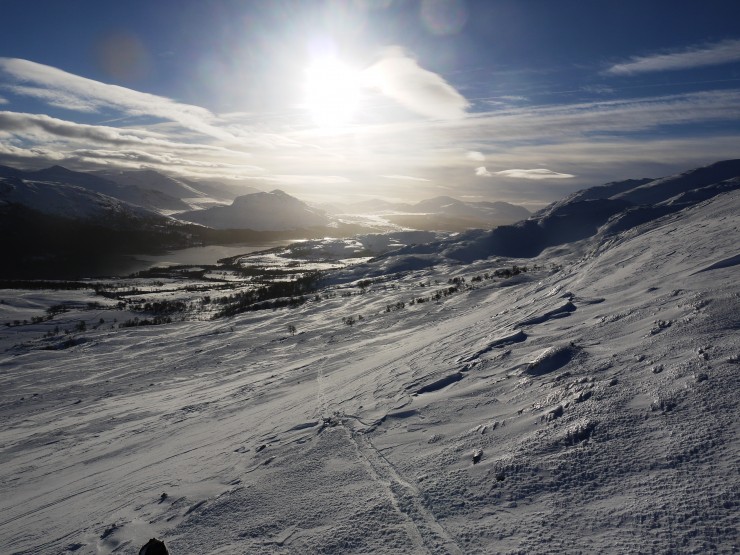
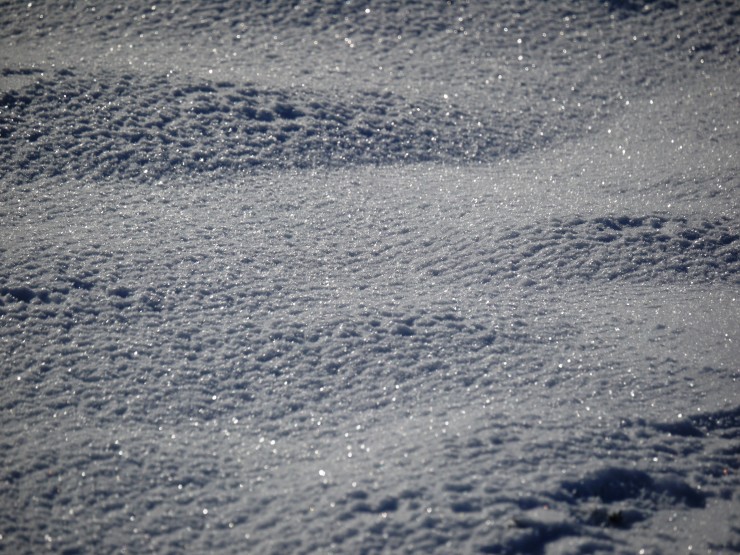
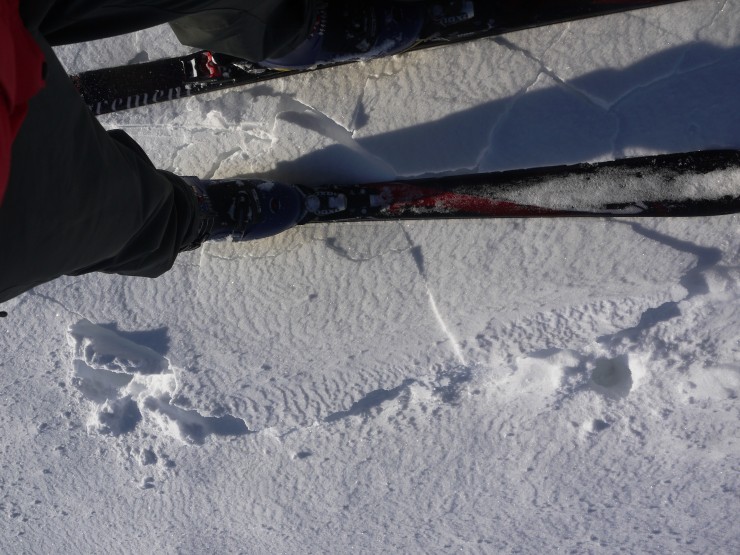
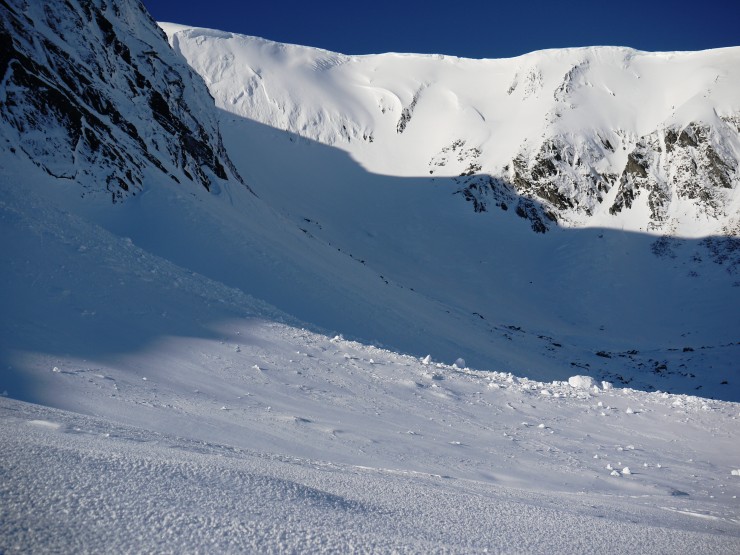
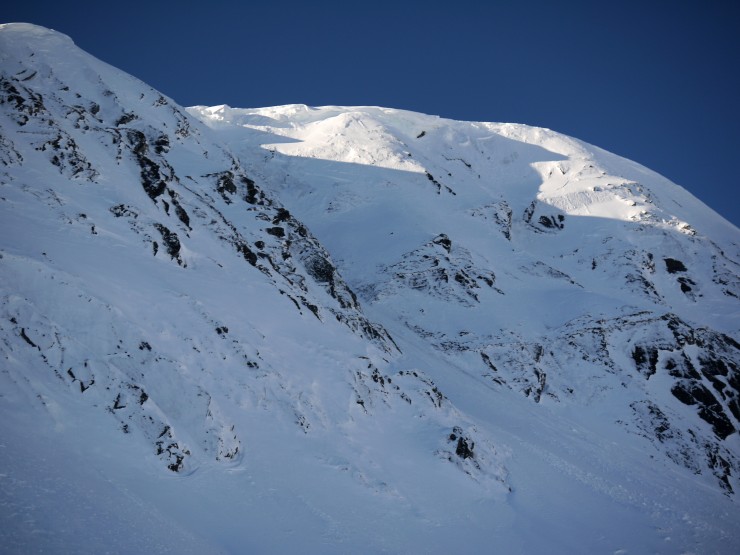
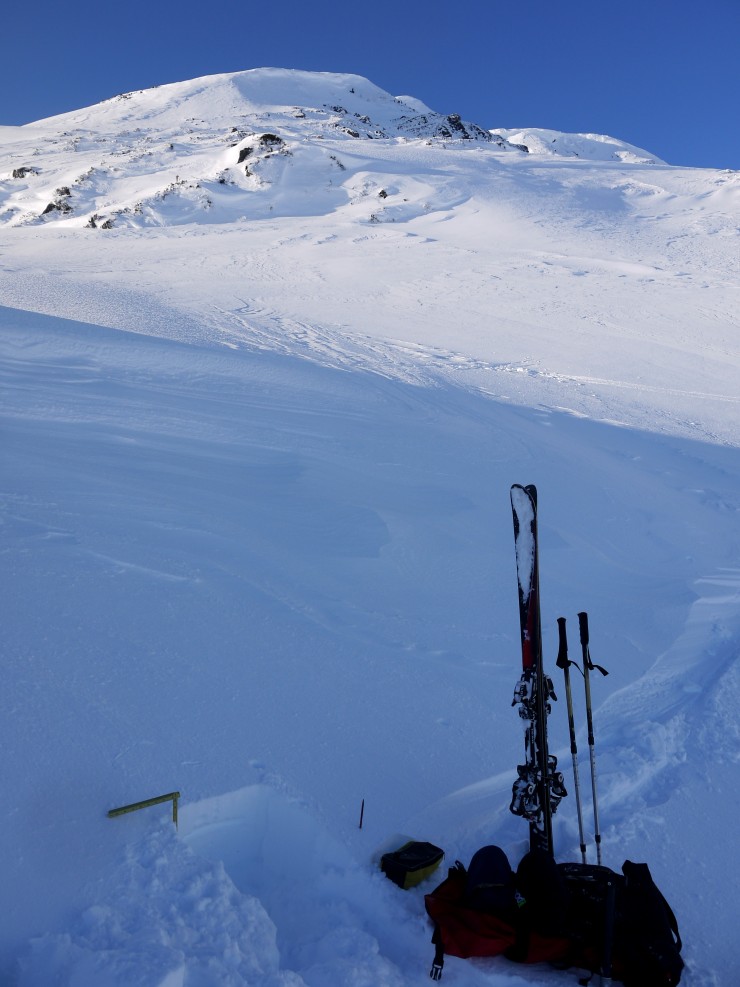
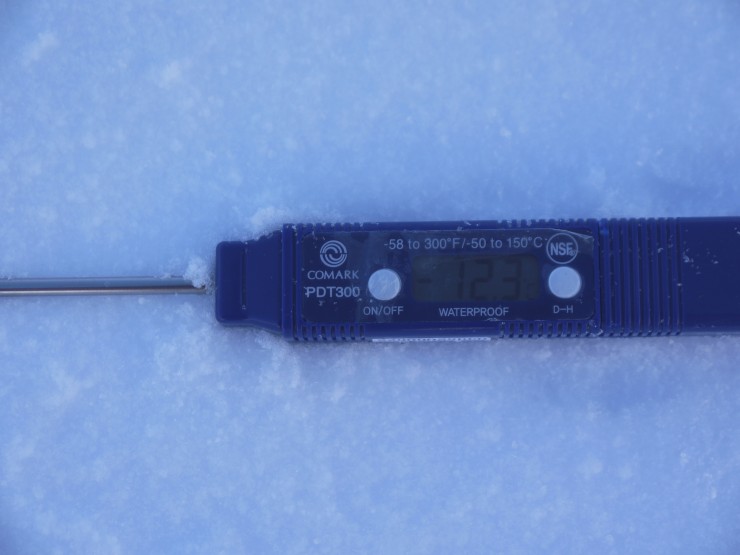
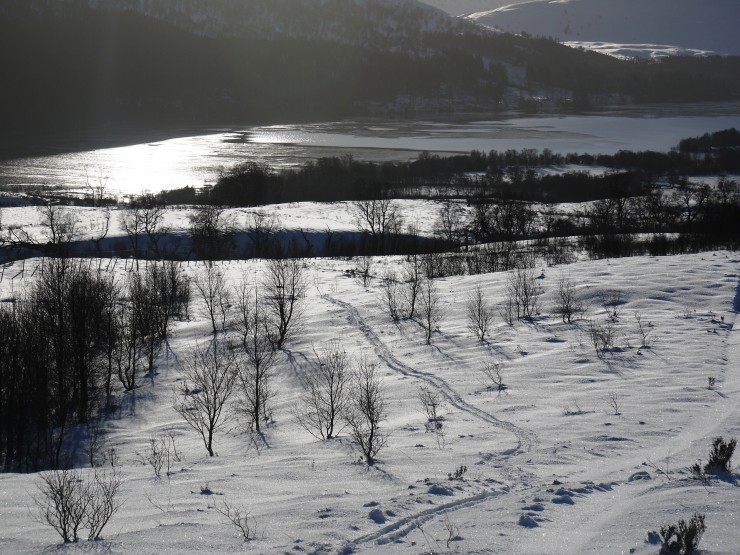




Grant Duff
19th January 2015 11:12 pm
Looks fantastic but damn cold!
Ben
20th January 2015 10:46 am
Great to know about surface hoar thanks. Is it only temps that can sort it out? Could Strong winds also break down crystals?
meagaidhadmin
20th January 2015 5:11 pm
Hi Ben,
Strong winds will almost certainly strip surface hoar lying on top of the snowpack, actually quite light to moderate winds will do the job as well since surface hoar crystals are fragile & discrete and present a lot of surface area to the wind.
However, if the surface hoar gets any significant snowfall on top of it (that is, snow falling in nil or very light winds) the surface hoar crystals fall flat and become a thin, continuous and difficult to detect slippery discontinuity between adjacent layers. Once fully buried this insidious weak layer will only dissipate if the layer is subject to a pretty sustained partial, or full, thaw.
Also, in the Scottish mountains it is not difficult to envisage a layer of surface hoar buried under a metre or so of snow being totally removed by heavy scouring after a dramatic and sustained change in wind speed and direction.
Hope this answers your question.
Here’s a good one! During the dramatic ‘Alpine’ winter we experienced in Scotland in 2010 there was widespread and massive surface hoar development (measured in cm not mm) all over the Carn Liath and ‘Meggie plateaux. A moderate E wind stripped this away and dumped these partially broken crystals onto W aspects, stronger winds and snowfall followed creating slab up to 3m+ deep over this weak layer. After about a month of very cold temps and little additional snowfall, facetting created an additional secondary weak layer. The whole lot failed suddenly one cold bright day in March producing a massive hard slab avalanche with a crownwall the best part of a 1km long and 3m high in places. It took out the main Coire Ardair path and destroyed or uprooted many big mature trees, leaving debris 6m deep in places; there’s some great photos on the blog of this. Similar big events in the Moy Corrie and Coire Chomharsain at the same time. From a forecaster’s perspective it was a pretty weird experience finding broken surface hoar crystals and well-developed facetted grains in adjacent weak layers!
Many thanks for your comment.
Mark Robertson
20th January 2015 12:20 pm
cheers for the update!
Ben
23rd January 2015 2:58 pm
Great knowledge and your 2010 anecdote has answered a further question rumbling around about re-deposition of surfac hoar via wind.
Cheers